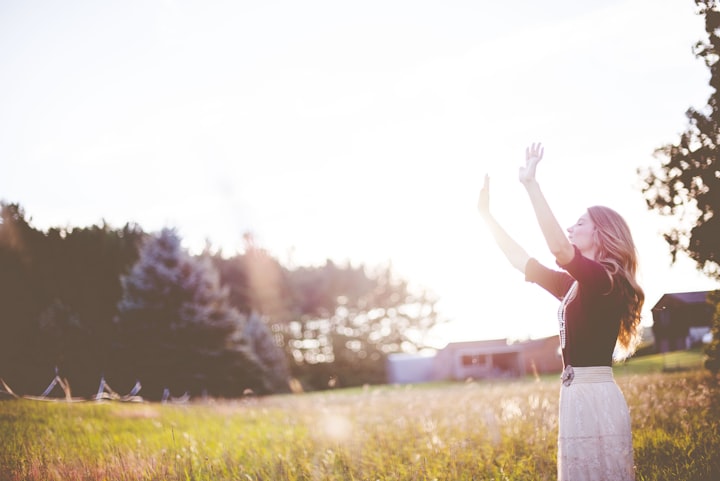Longevity in Blue Zones: Lessons from the World's Healthiest People
Cracking the Code of Longevity: Insights from the World's Healthiest Populations

For centuries, people have been searching for the secret to a long and healthy life. In recent years, researchers have focused their attention on Blue Zones - regions where people routinely live to be over 100 years old. These areas offer valuable insights into the lifestyle habits that contribute to longevity and wellness. Today, we will explore what Blue Zones are, their characteristics, and the lessons we can learn from the world's healthiest people.
Blue Zones are regions where people have a higher than average life expectancy. These zones were first identified by National Geographic fellow Dan Buettner and his team, who conducted extensive research into the lifestyles of people living in these areas. There are currently five Blue Zones around the world, including Ikaria, Greece; Sardinia, Italy; Okinawa, Japan; Nicoya, Costa Rica; and Loma Linda, California.
The concept of Blue Zones was first popularized in 2005 when Buettner wrote an article for National Geographic titled "The Secrets of a Long Life". The article highlighted the lifestyles of centenarians living in specific areas around the world and sparked significant interest among researchers and health enthusiasts.
Blue Zones are characterized by certain lifestyle habits that contribute to longevity, such as physical activity, plant-based diets, and strong social connections. The inhabitants of these areas also have a lower risk of chronic diseases such as diabetes, heart disease, and cancer.
What are the Characteristics of Blue Zones?
Blue Zones are identified by specific characteristics that contribute to the longevity and overall well-being of their populations.
- Active lifestyle - Centenarians in Blue Zones tend to engage in physical activity throughout their lives. Whether through manual labor, gardening, or walking, staying active is seen as an essential part of daily life.
- Plant-based diets - The diet in Blue Zones is primarily plant-based and includes various fruits, vegetables, beans, and nuts.
- Strong social connections - Social connections are a crucial part of the lives of centenarians in Blue Zones, who tend to form close-knit communities.
- Moderate alcohol intake - While not a universal trait, centenarians in some of the Blue Zones, like Sardinia and Ikaria, consume moderate amounts of alcohol.
- Sense of purpose - Living with a sense of purpose is a core aspect of life in Blue Zones and contributes to mental and emotional well-being.
While each of the Blue Zones contains unique cultures and traditions, some common traits are shared across all of them. For example, in each zone, people engage in regular low-intensity physical activity, maintain strong social connections, and eat primarily plant-based diets.
Health Benefits of Living in a Blue Zone
Living in a Blue Zone offers numerous health benefits, including an extended lifespan and a reduced risk of chronic diseases.
- Longer life expectancy - People in Blue Zones regularly live past the age of 100, with higher rates of centenarians than anywhere else in the world.
- Reduced chronic disease risk - Chronic diseases such as diabetes, heart disease, and cancer are less prevalent in Blue Zones than in other areas of the world.
- Greater overall well-being - The lifestyle habits of Blue Zone populations contribute to their mental and emotional well-being as well.
The longevity of people living in Blue Zones is impressive, with some areas showing significantly higher rates of centenarians than other regions. For example, Okinawa, Japan, has one of the highest rates of centenarians globally, with ten times more centenarians per capita than in the United States.
The plant-based diet, low-stress lifestyles, and high levels of physical activity in Blue Zones all contribute to a reduced risk of chronic disease development. Additionally, social connections can help reduce stress and promote overall well-being.
Dietary Habits in Blue Zones
The diet in Blue Zones is primarily plant-based and includes a variety of fruits, vegetables, nuts, and whole grains.
- Plant-based diets - Centenarians in Blue Zones typically eat a diet consisting of up to 95% plant-based foods.
- Emphasis on whole foods - Food in Blue Zones is minimally processed, with whole grains, vegetables, and fruits making up the bulk of the diet.
- Limited meat consumption - While meat is not entirely absent from Blue Zone diets, it is consumed in limited quantities.
In Sardinia, Italy, the diet focuses heavily on plant-based foods such as barley, legumes, and vegetables. In contrast, the Okinawan diet includes purple yams, bitter melon, and seaweed. In all Blue Zones, the emphasis is on whole, minimally processed foods that are rich in nutrients.
Lifestyle Habits in Blue Zones
Physical activity, social connections, and low-stress lifestyles are essential components of life in Blue Zones.
- High levels of physical activity - In Blue Zones, physical activity is a part of daily life, and people of all ages engage in low-intensity activities like gardening and walking.
- Strong social connections - Blue Zone residents form close-knit communities that provide a sense of belonging and emotional support.
- Limited stress levels - Residents of Blue Zones often lead low-stress lives thanks to a slower pace of life, strong social connections, and a sense of purpose.
High levels of physical activity in Blue Zones
Physical activity plays a vital role in Blue Zone communities, and people engage in regular low-intensity activities like walking, gardening, and manual labor. This constant movement helps promote overall health and well-being.
Importance of social connections in Blue Zones
Close-knit communities are a hallmark of life in Blue Zones, and social connections are essential for residents' emotional and mental well-being. These social connections contribute to a sense of belonging, emotional support, and purpose.
Stress and Wellness in Blue Zones
Blue Zone residents tend to have lower stress levels than people living in other areas of the world. This is due in part to the emphasis on social connections, physical activity, and a slower pace of life.
Comparison of stress levels in Blue Zones to other communities
Studies have shown that people living in Blue Zones experience lower levels of stress than people in other areas. For example, the 2008 Gallup-Healthways Well-Being Index found that people living in Okinawa, Japan, reported the lowest levels of stress worldwide.
In addition to low-stress lifestyles and strong social connections, Blue Zone residents also engage in mindfulness practices like meditation, prayer, or moments of reflection.
Lessons on how to manage stress from Blue Zones
Residents of Blue Zones have a variety of strategies for managing stress, such as staying active, spending time with friends and family, and engaging in mindfulness practices.
Blue Zone Communities and Aging
The residents of Blue Zones tend to age differently than people in other areas, with higher rates of centenarians and a slower rate of age-related decline.
In Blue Zone communities, centenarians are seen as valuable members of society, often serving as spiritual leaders or sources of wisdom.
(Read more: Facial Fitness: Anti-Aging Facial Exercises to Look Younger)
Factors that contribute to the aging process in Blue Zones
Centenarians in Blue Zones tend to have specific genetic factors that contribute to longevity, such as a particular allele of the FOXO3 gene. Additionally, the lifestyle habits of Blue Zone residents, such as their plant-based diets and physical activity levels, contribute to the aging process.
The Role of Genetics in Blue Zone Communities
While lifestyle habits play a vital role in the longevity of Blue Zone residents, genetics also contributes to the high rates of centenarians in these areas.
Lessons from Blue Zones
The lifestyle habits of Blue Zone residents offer valuable lessons for people around the world who want to improve their health and well-being.
- Purposeful living - Living with a sense of purpose can contribute significantly to one's overall well-being and sense of fulfillment.
- Mindfulness practices - Engaging in mindfulness practices like meditation and reflection can help reduce stress and promote emotional well-being.
Importance of living a purposeful life
Living with a sense of purpose helps promote positive mental and emotional well-being and can contribute to a longer, healthier life.
Mindfulness practices from Blue Zones
Residents of Blue Zones often engage in mindfulness practices like meditation, prayer, or moments of reflection, which help promote emotional well-being and stress management.
Applying Blue Zone Lessons Outside of Blue Zones
The lessons learned from Blue Zones can be applied to other communities around the world to promote longevity and overall wellness.
Importance of applying Blue Zone lessons to other communities
By adopting lifestyle habits and behaviors similar to those found in Blue Zones, people outside of these regions can improve their quality of life and overall well-being.
Ways to incorporate Blue Zone lifestyle habits
Incorporating lifestyle habits like plant-based diets, daily physical activity, and strong social connections is vital for promoting overall health and well-being.
Challenges to implementing Blue Zone habits
Adopting Blue Zone lifestyle habits can be a challenge, especially in areas where the culture and environment do not support these behaviors. However, small changes over time can make a significant impact on one's life.
Future of Blue Zones and Longevity
As technology and urbanization continue to change the world, the future of Blue Zones and longevity is uncertain.
Impact of urbanization on Blue Zones
Urbanization and modernization can threaten the lifestyle habits that contribute to longevity in Blue Zones, such as physical activity and plant-based diets.
The decline of Blue Zones
Blue Zones are already under threat, with some areas facing pressure from urbanization and changing lifestyles.
Future of longevity and wellness
Despite these challenges, the lessons learned from Blue Zones offer hope for the future of longevity and wellness. By adopting healthy lifestyle habits and behaviors, people around the world can improve their overall well-being and quality of life.
Conclusion
The lifestyle habits of Blue Zone residents offer valuable lessons for people around the world who want to promote longevity and overall wellness. By adopting essential lifestyle habits like regular physical activity, a plant-based diet, and strong social connections, people can improve their quality of life and increase their life expectancy.
About the Creator
Dikshant Kumar
I am a student with a pen in hand and a mind full of ideas. I weave words as a Writer and share my thoughts as a Blogger. With every piece I create, I aim to inspire and spark curiosity.






Comments
There are no comments for this story
Be the first to respond and start the conversation.